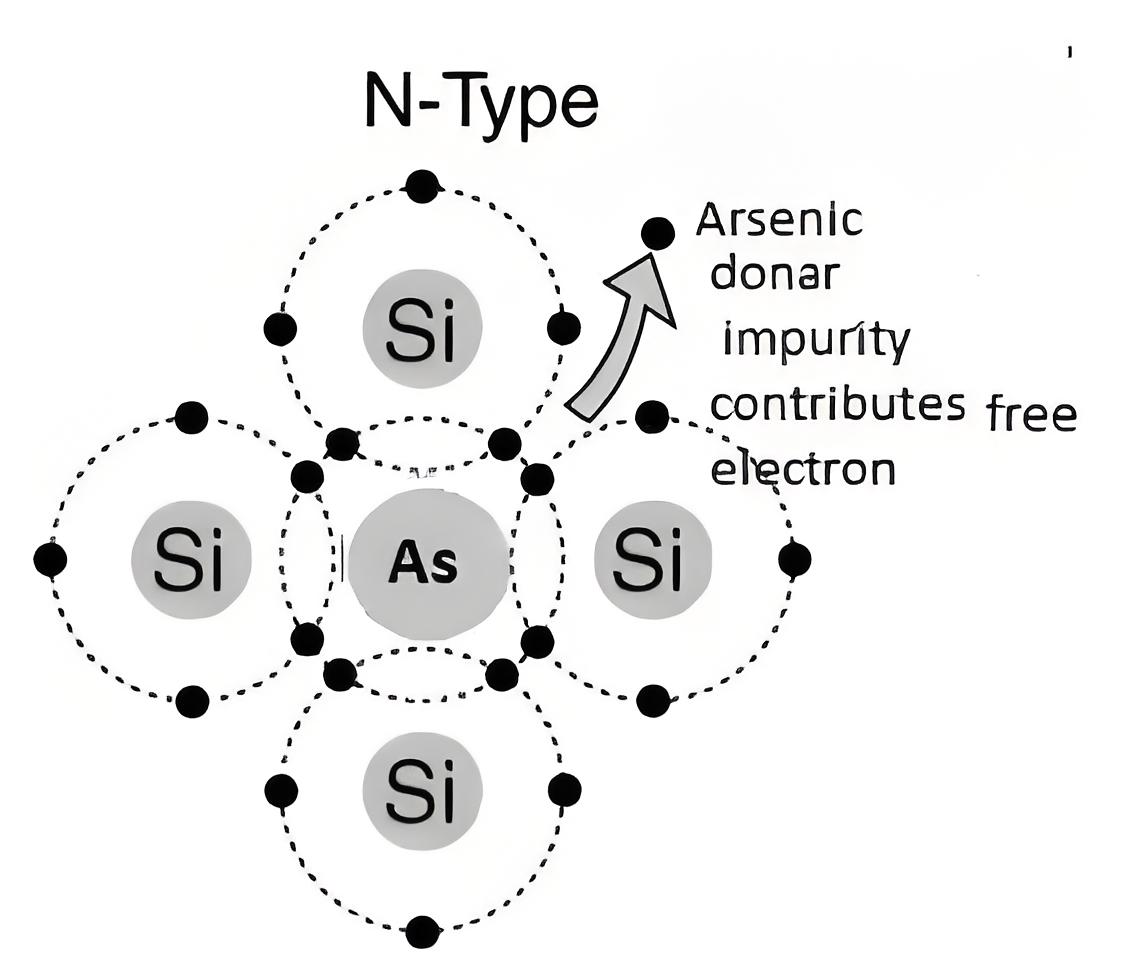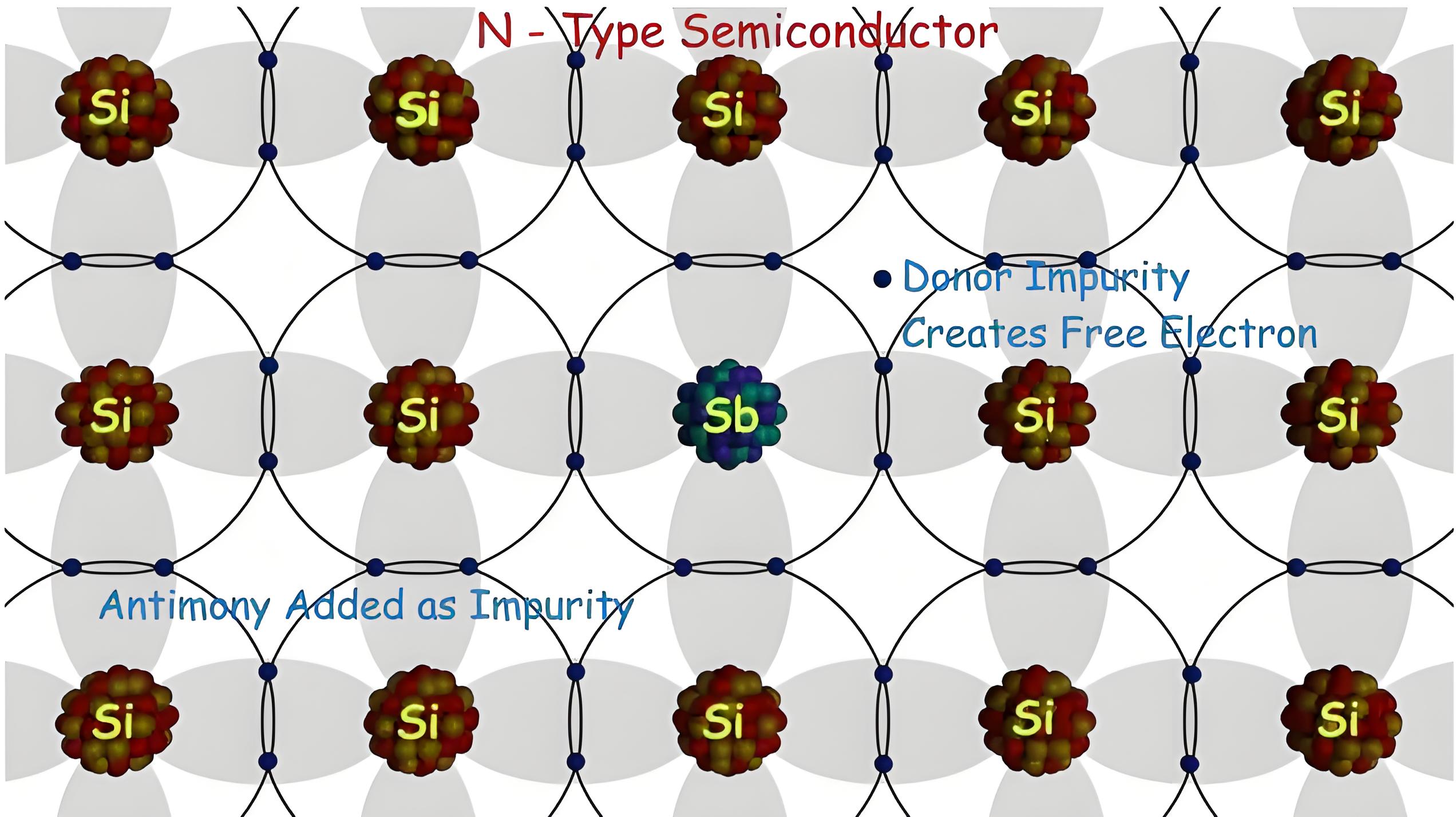What is an N Type Semiconductor?
What is an N Type Semiconductor?
N Type Semiconductor Definition
An n-type semiconductor is defined as a type of semiconductor that has been doped with pentavalent impurities to increase its conductivity by adding free electrons.

Before understanding what an n-type semiconductor is, we should focus on basic atomic science. Atoms aim to have eight electrons in their outermost orbit, known as valence electrons. Not all atoms achieve this, but they all strive to reach this stable configuration.
The electrons at an outermost orbit of an atom are called valence electrons. If the outermost orbit of an atom does not have eight electrons, then there will be as many vacancies as the lack of electrons in orbit. These vacancies are always ready to accept electrons to fulfil eight electrons in the outermost orbit of the atom.
The most commonly used semiconductors are silicon and germanium. Silicon has 14 electrons arranged as 2, 8, 4, while germanium has 32 electrons arranged as 2, 8, 18, 4. Both semiconductors have four electrons in their outermost orbit, leaving vacancies for four more electrons.
Each of the four valence electrons in silicon or germanium forms a covalent bond with neighboring atoms, filling the vacancies. Ideally, all valence electrons in a semiconductor crystal are involved in covalent bonds, so there should be no free electrons in the crystal.
But this is not the actual case. At absolute 0o Kelvin there would not be any free electron in the crystal, but when the temperature rises from absolute zero to room temperature, numbers of valence electrons in the bonds are thermally excited and come out from the bond and generate a number of free electrons in the crystal. These free electrons cause the conductivity of the semiconductor materials at any temperature higher than absolute zero.
There is a method of increasing conductivity of semiconductors at any temperature greater than absolute zero. This method is called doping. In this method is pure or intrinsic semiconductor is doped with pentavalent impurities like antimony, arsenic and phosphorus. These impurity atoms replace some of the semiconductor atoms in the crystal and occupy their positions. As the impurity atoms have five valence electrons in the outermost orbit 4 of them will create the covalent bond with four adjacent semiconductor atoms.

One valance electron of impurity atom does not get chance to involve in covalent bonding and becomes more loosely bounded with parent impurity atom. At room temperature, these loosely attached fifth valence electrons of impurity atoms can come out from its position due to thermal excitation.
Due to this phenomenon, there will be a considerable number of free electrons, but still, there are breakdowns of covalent bonds in the crystal due to thermal excitation at room temperature. The free electrons in addition to free electrons created due to the breakdown of a semiconductor to semiconductor and semiconductor to impurities covalent bonds cause the total of free electrons in the crystal.
Although whenever a free electron gets created during the breakdown of a semiconductor to semiconductor covalent bond, there is a vacancy created in the broken bond. These vacancies are referred to as holes. Each of these holes is considered as a positive equivalent of a negative electron as it gets created due to lack of one electron. Here electrons are main mobile charge carriers. In an n-type semiconductor there will be both free electrons and holes.
But the number of holes is quite smaller than that of electrons because holes are created only due to the breakdown of the semiconductor to semiconductor covalent bond whereas free electrons are created both due to loosely bounded non-bonded fifth valence electron of impurity atoms and breakdown of the semiconductor to semiconductor covalent bonds.
Hence, number of free electrons >> number of holes in n-type semiconductor.That is why free electrons are called majority carriers, and holes are called minority carriers in the n-type semiconductor. As the negatively charged electrons mainly involve in charge transferring through this semiconductor, it is referred to as negative type or n-type semiconductor. Although there are plenty of free electrons in the crystal, still it is electrically neutral as the total number of protons and the total number of electrons are equal.
The Electricity Encyclopedia is dedicated to accelerating the dissemination and application of electricity knowledge and adding impetus to the development and innovation of the electricity industry.













